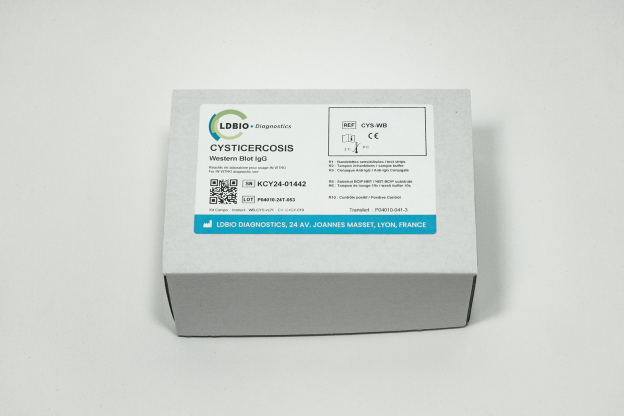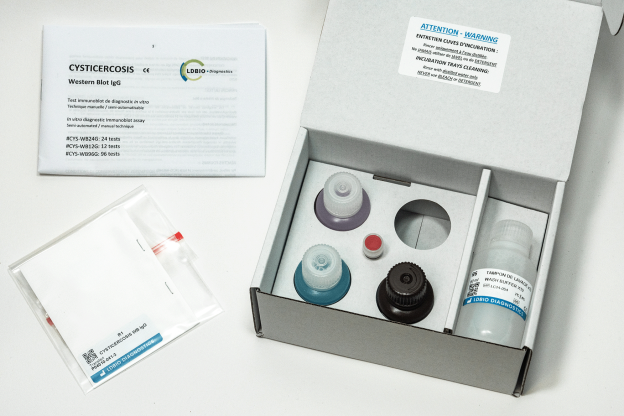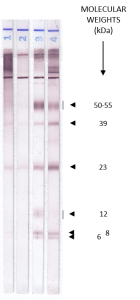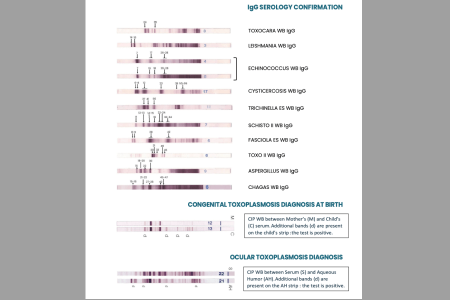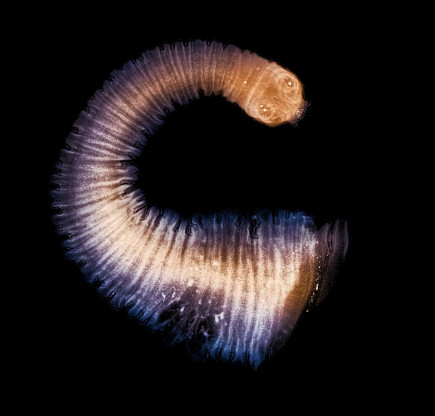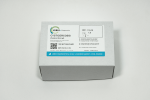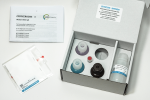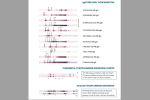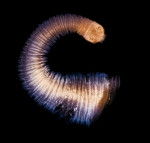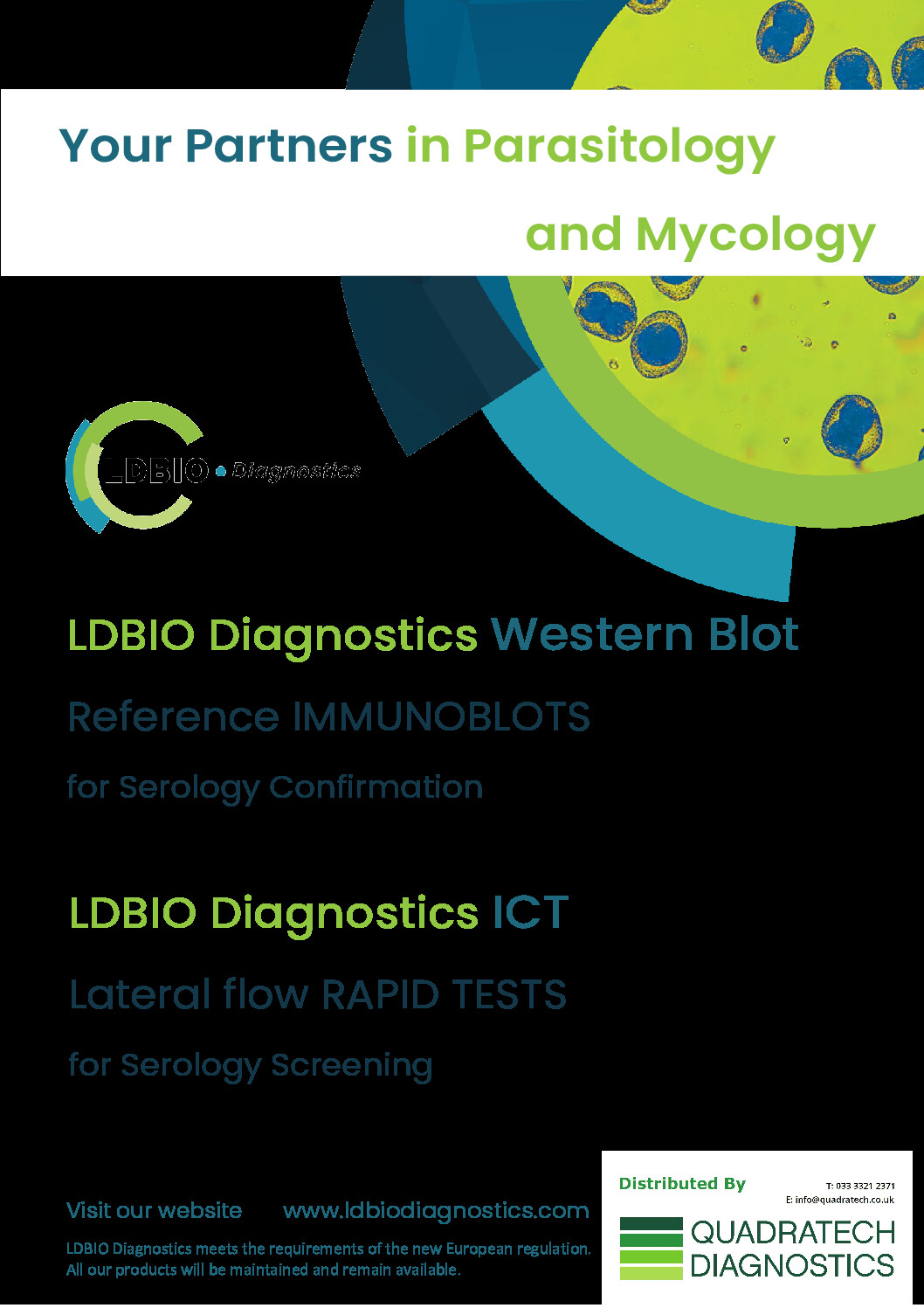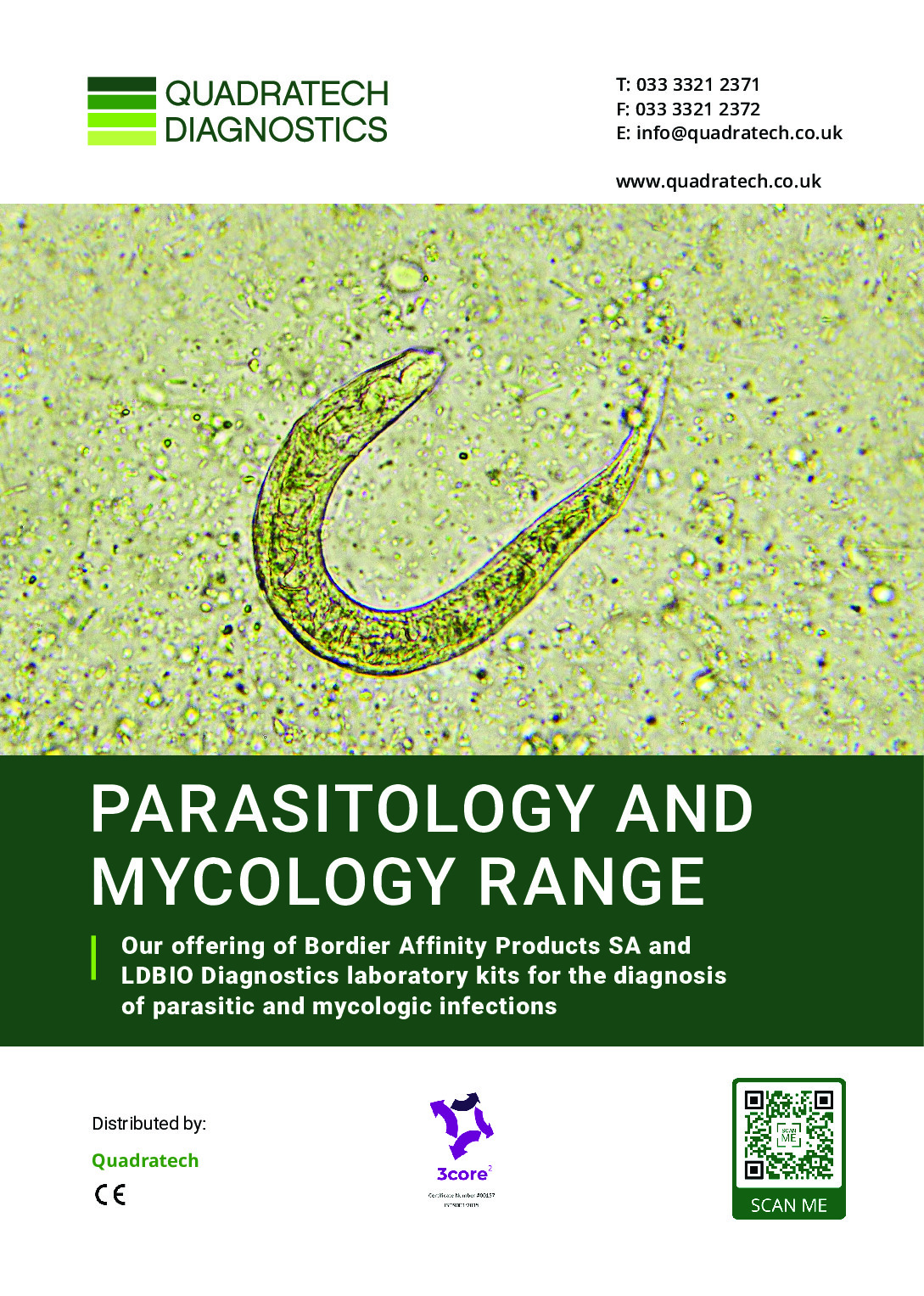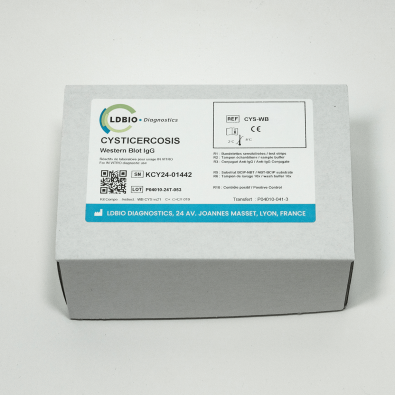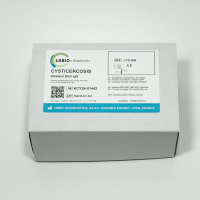
Cysticercosis Western Blot IgG (96T)
Cysticercosis Western Blot IgG (96T)
We're always working hard to give our customers as much information on products and the best price possible. If you need any assistance or would like a quote please contact us and we will be happy to help
-
Product Summary:
Cysticercosis Western Blot IgG (96T) (CYS-WB96G) is a single use qualitative test of serological IgG diagnosis by Immunoblot Assay of cysticercosis intended for confirmatory testing of a positive or equivocal result obtained through classic screening tests. It can be performed on sera or cerebrospinal fluid (CSF). Kit of 96 tests.
CYSTICERCOSIS Western Blot IgG TEST
Even though ELISA is the most commonly used screening test, it lacks sensitivity, in particular for parenchymatous neurocysticercoses. Moreover, there is a high risk of cross-reactions with other parasites, especially in developing countries where polyparasitism is common.
The Haute Autorité de Santé (HAS) in France as well as the American Center for Disease Control (CDC) recommend the immunoblot for the confirmation of serodiagnoses (Argumentaire HAS, 2018, DPDx Cysticercosis, 2019).
Immunoblot is the serological test with the best performances in terms of sensitivity and specificity (Rodriguez et al., 2012, Deckers et al., 2010). It allows an early diagnosis, when patients are more susceptible to be receptive to treatment.
In order to answer the demand, LDBIO Diagnostics developed a reliable test based on the Western Blot technique. Associated with highly sensitive natural antigens, the CYSTICERCOSIS Western Blot IgG test is a robust confirmation technique of classical screening tests for the diagnosis of cysticercosis and neurocysticercosis.
Performance evaluations of CYSTICERCOSIS Western Blot IgG test on several sample cohorts showed a 97,5% sensitivity and a specificity of 100% including with patients suffering of different parasitoses or auto-immune diseases.
Each kit is composed of sensitized and precut strips, the ready-to-use liquid reagents, and the positive control serum. The antigens (Taenia solium cysticerci extract of porcine origin), once separated by electrophoresis, are bound by electroblotting to the surface of a nitrocellulose membrane (called the transfer) cut into 24 strips numbered from 1 to 24.
-
Product RangeProduct CodeCYS-WB96GProduct NameCysticercosis Western Blot IgG (96T)Product CategoryProduct BrandProduct Analyte or ApplicationProduct SizeKit of 96 testsProduct Storage2°C to 8°C
-
